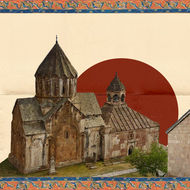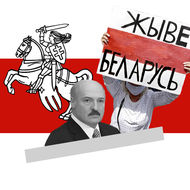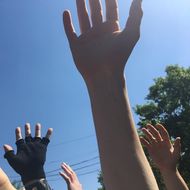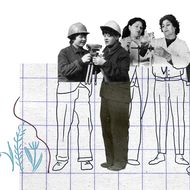Search articles
Search results for
Christianity in Karabakh: Azerbaijani Efforts At Rewriting History Are Not New
By Hratch Tchilingirian
In the context of the Armenian-Azerbaijani conflict, the “Albanian connection” has become a politicized issue of irredentism, hijacking the rich Christian heritage of Karabakh. The roots of this historiography go back to the Soviet policy of “nativization".
Chronicles of the Old Yerevan Quarter
By Lilit Margaryan
The destruction of some historic buildings began in the Soviet era. That practice continued after the independence of Armenia. The Old Yerevan Project is meant to restore the architectural heritage of the capital city, however, progress has been slow and controversial.
Citizens With Abundant Rights, Constrained by Stereotypes
By Astghik Karapetyan
In order for a democratic society to function, citizens must exercise their rights and responsibilities. The state is obligated to take steps to shape an independent and strong civil society, Astghik Karapetyan writes.
City of Workaholics During COVID-19
By Tatevik Avetisyan
What is life like in one of the epicenters of the global coronavirus pandemic? In this essay, Tatevik Avetisyan, who has been living in Milan, Italy for more than a year, peels back the layers of the human condition.
Civic Culture
This month’s issue features stories about those rights and responsibilities, including individual awareness, the role of civil society and the role of the judiciary in defending human rights.
Civic Resistance in Belarus: The Strong Voice of a Tired Country
By Ales Plotka
The main catchphrase this month in Belarus is “We don’t want a Ukraine scenario, we want an Armenia scenario,” writes Ales Plotka about the ongoing protests in Belarus following fraudulent presidential elections in August.
Civil Disobedience and Clashes in Yerevan
While parliament prepares to elect the country’s new prime minister on April 17, thousands of Armenians poured out into the streets of the capital, exercising acts of civil disobedience. Clashes with security forces led to dozens of injuries. A recap of the day’s events.
Civil Society as Public Protector
By Zara Hovhannisyan
If civil society is considered one of the most important pillars of a democratic state, did Armenian civil society fail in its role in protecting human rights, ensuring public oversight and accountability after 2018?
Closing the Gender Gap
By Lara Techekirian
Although the principle of equal pay for equal work for men and women is fully implemented in Armenia’s Labor Code, a gender pay gap persists. Lara Techekirian looks at the challenges, the government’s response and presents a set of recommendations.
Combating Child Sexual Abuse
By Zara Hovhannisyan
Although norms prohibiting violence against, and sexual exploitation of, children have been enshrined in international and domestic legal mechanisms, violence against children remains one of the most serious challenges in the modern world.












